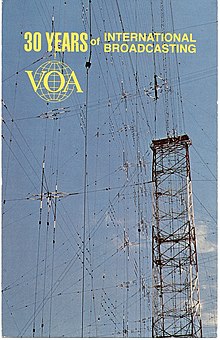Diexism
Diexism is the hobby of listening to distant or exotic radio stations. The name comes from the telegraphic term DX, which means distance. The radio listener is the diexist.
In the case of radio amateurs, it will be understood that the communication is established between geographically remote points. When a radio amateur transmits the words "CQ DX, CQ DX, CQ DX...", he is looking for a distant contact and to collaborate, nearby stations must refrain from answering the call. In some countries, radio amateurs often call diexistas (DXers), "curuyas".
DX can be practiced in all frequency bands and emission classes.
- The modes most used by the radios are the CW and the Single Side Band (B.L.U.).
- The most used mode for listeners is the modulated amplitude and the most listened band is usually the short wave; communication can be established even with antipodes.
DX on high bands such as VHF and UHF and even SHF is also possible, generally with more modest ranges, on the order of a few to several hundred kilometers, although such range can be greatly increased with techniques such as &# 34;moon bounce" or "meteoric scattering", or with the use of highly directional antennas.
- In 2006, Scottish radios declared that they had received for fifteen minutes clearly Spanish commercial FM (VHF) radio stations on the radios of their cars.[chuckles]required]
- DX cases have been recorded with modest PMR 446 transmitters in UHF band.
Beyond the minimum necessary equipment and its quality, success will largely depend on the propagation conditions (the number of sunspots is one of the most influential elements), the chosen frequency, the time of day or the season of the year, which allow or not the radio waves to reach the place where we are and the efficiency of the receiving antenna.
Basic equipment may consist of a simple portable radio receiver. It is preferable for the tuner to be based on PLL technology for good frequency stability and for the dial to be digital so that you can accurately determine the frequency being tuned, although older devices with tube technology also give good results, sometimes even better than the most modern ones.
Diexism in the world
France
The French authorities (in 2008, the ANFR) do not issue indicatives to right-handers. However, the French radio amateur association REF-Union provides callsigns of the form F-nnnnn (where n is a digit) free of charge to those who request them. While they are not official callsigns, they are commonly accepted as valid by the amateur radio community.
Team
- Antenna (can be from a simple telescopic antenna integrated into the receiver, to a high-gain directional antenna).
- Tower (he lifts the height of the antenna; in short wave, and for a wide variety of antennas, a high antenna improves the signal captured, for heights greater than a quarter of the wavelength)
- Cable (transmission line that transmits the antenna signal to the receiver)
- Radio receiver or radio transmitter
Although less frequent, it is also possible to do die-casting on television and utility stations such as airports, planes, coastal stations, weather stations, ships and radio beacons.
Eavesdropping on professional frequencies can constitute a crime in different countries. There are cases in which even the mere possession of listening equipment capable of sweeping certain frequencies is considered a crime. It is advisable to find out about the rules in force in the country where listening is practiced.
Hobby
Many diexers take their hobby very seriously and make it a real challenge. It is usual to start with known stations that serve as a practice and as a reference point and then tune in to stations that are increasingly weak and distant. The knowledge acquired by diexistas has served in many cases to solve reception and transmission problems in communications.
Once the listening is done, it is usual for the diexist to proceed to prepare a "reception report" which, through the SINPO code (or others, although this is the most popular), it sends to the station to let it know the quality with which it has received its broadcast. The station, in gratitude, usually responds by sending a QSL card to the listener, which they will add to their collection of "trophies", valued based on the rarity of the issuer.
Reception report
The reception report must indicate the day, start and end time of listening, tuning frequency, geographic location of the listener, receiving equipment and antenna used, and a brief summary of the listening. To technically evaluate the reception characteristics, the SINPO code is frequently used, evaluating the following aspects on a scale of 1 to 5:
- Straingth - Signal intensity.
- Interference - Interference of other stations, electrical equipment, etc.
- Noise - Noise, natural environmental interference.
- Pclothesgation - Conditions of propagation and stability of the signal. The "fading" is included here or the signal fading.
- Overall - Overall appreciation of the reception, summary-media of the above points.
A SINPO 55555 equals perfect reception.
To report CW (telegraphy) stations, the RST code is often used.
Some stations that accept reception reports via the Internet:
- All India Radio
- World Catholic Radio
- Radio Prague
- World Harvest Radio
- Radio Taiwan International
- Radio New Zealand International
- Radio Canada International
